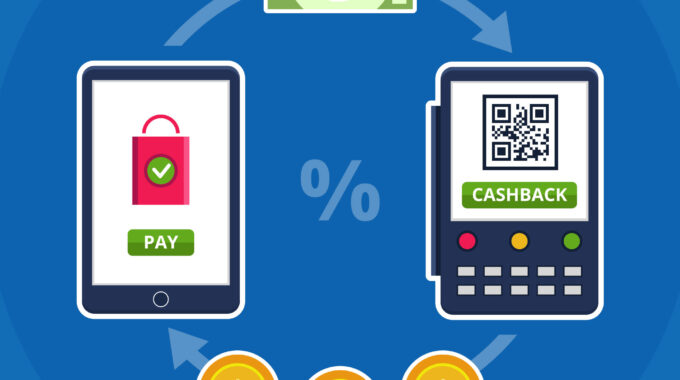Introduction In the dynamic landscape of small businesses, Point of Sale (POS) solutions emerge as…

Unveiling the Right Payment Solution: A Comprehensive Analysis of Shopify Payments vs. Other Payment Gateways – Pros and Cons
Introduction
In the dynamic world of e-commerce, the choice of a payment gateway significantly impacts the success and efficiency of an online store. Shopify, a leading e-commerce platform, offers its proprietary payment solution, Shopify Payments. However, various other third-party payment gateways are available. This white paper aims to provide a comprehensive analysis of Shopify Payments versus other payment gateways, examining their pros and cons to guide businesses in making informed decisions.
Shopify Payments: An Overview
- Features
i. Seamless Integration: Shopify Payments is seamlessly integrated into the Shopify platform, ensuring a user-friendly and cohesive experience.
ii. Unified Dashboard: Merchants can manage orders, payments, and customer information through a unified dashboard.
iii. Enhanced Security: Shopify Payments prioritizes security, complying with industry standards to protect both merchants and customers.
iv. Automatic Setup: Shopify Payments is automatically set up when a store is created, eliminating the need for manual configuration.
- Fees
i. Transparent Pricing: Shopify Payments offers transparent and competitive pricing, with no setup fees and lower transaction fees for using Shopify as the primary gateway.
ii. No Additional Transaction Fees: Using Shopify Payments exclusively eliminates additional transaction fees imposed by third-party gateways.
iii. Chargeback Protection: Shopify Payments provides chargeback protection, covering eligible chargebacks for qualifying merchants.
iv. International Fees: Merchants should be aware of additional fees for accepting payments from international customers.
- User Experience
i. Seamless Checkout: Shopify Payments provides a seamless checkout experience for customers, reducing friction and increasing conversion rates.
ii. Integrated Refund Process: The refund process is integrated into the Shopify platform, simplifying the handling of returns and refunds.
iii. Customer Trust: The use of Shopify Payments can instill trust among customers, as transactions occur within the familiar Shopify environment.
Comparison with Other Payment Gateways
- PayPal
i. Pros:
Widely Recognized: PayPal is a globally recognized and trusted payment method.
Versatility: Offers multiple payment options, including PayPal Credit.
Broad International Reach: Allows businesses to accept payments from customers worldwide.
ii. Cons:
Transaction Fees: PayPal charges transaction fees in addition to standard credit card fees.
Redirects: Some users may find the redirection to the PayPal site during checkout less seamless.
- Stripe
i. Pros:
Developer-Friendly: Known for its developer-friendly interface and extensive documentation.
Customization: Provides a high level of customization for businesses with specific needs.
Subscription Management: Robust tools for managing subscriptions and recurring payments.
ii. Cons:
Account Stability: Stripe has been known to freeze or suspend accounts without warning, causing disruptions for some businesses.
Learning Curve: The extensive features may have a steeper learning curve for beginners.
- Authorize.Net
i. Pros:
Established Reputation: Authorize.Net has a long-established reputation in the payment processing industry.
Diverse Payment Options: Supports a wide range of payment options, including credit cards and e-checks.
Advanced Fraud Detection: Offers advanced fraud detection tools for enhanced security.
ii. Cons:
Monthly Fees: Charges a monthly gateway fee in addition to transaction fees.
Complexity: The interface may be considered less intuitive for some users.
Considerations for Choosing a Payment Gateway
Business Requirements
- Type of Products: The nature of the products or services being sold may influence the choice of a payment gateway.
- Geographic Reach: Consider the target audience and the need for international payment capabilities. iii. Industry Regulations: Ensure compliance with industry-specific regulations and requirements.
Integration and Compatibility
- Seamless Integration: Assess the ease of integration with the chosen e-commerce platform, such as Shopify.
- Compatibility with Other Tools: Consider whether the payment gateway integrates smoothly with other business tools and software.
Security Measures
- PCI Compliance: Ensure that the chosen payment gateway complies with Payment Card Industry Data Security Standard (PCI DSS) requirements.
- Fraud Prevention: Evaluate the effectiveness of the payment gateway’s fraud prevention measures.
Cost Considerations
- Transaction Fees: Compare transaction fees, including any additional fees for international transactions.
- Subscription Fees: Consider whether the payment gateway imposes monthly subscription fees.
User Experience
- Checkout Experience: Prioritize a seamless and user-friendly checkout experience for customers.
- Customer Trust: Consider the impact of the chosen payment gateway on customer trust and confidence.
Case Studies: Success Stories with Different Payment Gateways
- Showcase real-world examples of businesses that have achieved success with Shopify Payments.
- Highlight success stories of businesses using alternative payment gateways, detailing their experiences and outcomes.
- Provide insights into how the choice of payment gateway influenced the overall success of these businesses.
Conclusion
Choosing the right payment gateway is a critical decision for e-commerce businesses, and the comparison between Shopify Payments and other payment gateways reveals a spectrum of pros and cons. Shopify Payments offers seamless integration, competitive fees, and enhanced security within the Shopify ecosystem. However, businesses must weigh these advantages against alternatives like PayPal, Stripe, and Authorize.Net, each with its unique features and considerations.
By aligning the choice of a payment gateway with business requirements, integration needs, security measures, and cost considerations, merchants can make informed decisions that contribute to a positive user experience and business success. As the e-commerce landscape continues to evolve, the flexibility to adapt to changing requirements and customer expectations becomes paramount. This white paper serves as a comprehensive guide to empower businesses in navigating the complexities of payment gateway selection for sustained e-commerce success.




